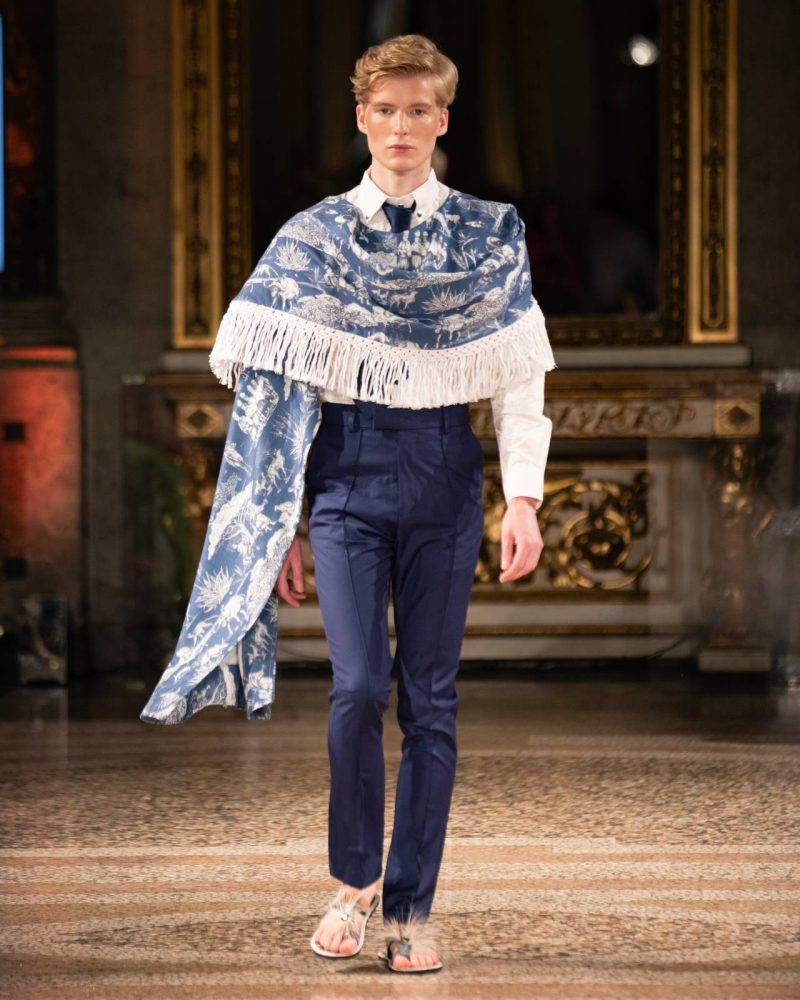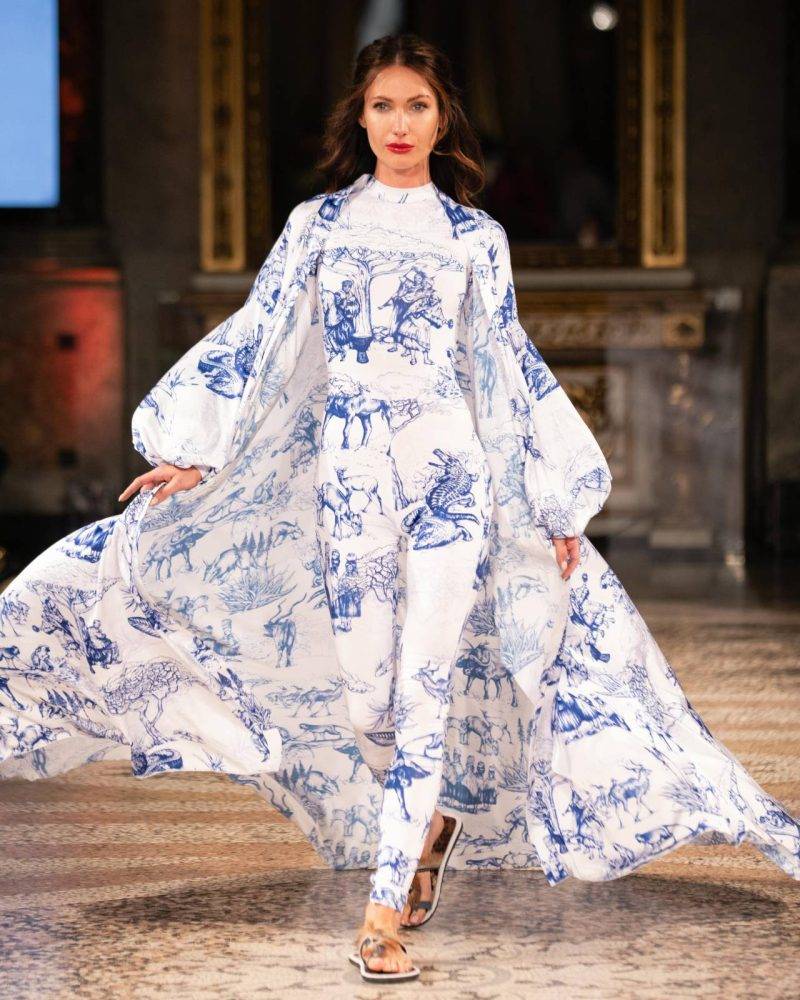
Jessica Jane Molebatsi and her husband and enterprise accomplice Wandile Molebatsi are the founders of the model Molebatsi. (Picture provided)
Style weeks are thrilling occasions for the worldwide couture group. It’s the place designers unveil their upcoming collections, setting the stage for the traits and kinds that can outline the season.
From New York to Paris, Milan to Tokyo, these occasions function a stage the place the world’s most modern and influential designers showcase their visions.
But, in recent times, probably the most refreshing developments has been the rising visibility of South African designers who’re proudly exhibiting the world what the nation has to supply.
One such designer, Jessica Jane Molebatsi, is showcasing her assortment on the Shanghai Style Week in China from 25 to 31 March.
Molebatsi’s assortment, titled Toiles du Sud, which means Canvas of the South, is just not solely a phenomenal fusion of cultural narratives but in addition highlights the distinctive method South African designers have taken in making their mark on the worldwide trend stage.
Molebatsi, co-founder of the model Molebatsi, alongside her husband and enterprise accomplice Wandile Molebatsi, isn’t any stranger to breaking boundaries. This yr, she is going to unveil the third instalment in her African Toiles de Jouy sequence, following on the success of earlier collections like Noluthando and Rakgadi.
Toiles du Sud is impressed by the enduring French Toiles de Jouy print — a cloth design that originated within the small city of Jouy-en-Josas.
However whereas the print has French heritage, Molebatsi’s assortment is a dwelling embodiment of her South African roots, woven with the various cultural legacies of her household.
As she explains: “The print itself, being a Toiles de Jouy is French in origin, and that is the third instalment of Toiles de Jouy I’ve finished.
“Nonetheless, in essence, what I’ve been doing with my ranges is making an attempt to mix mine and Wandile’s cultural backgrounds, so it turns into a illustration of us and our household but in addition larger South Africa.
“That’s the intention behind the ranges — it’s a dwelling illustration of a blended dwelling expertise.”

The collaboration between Jessica and Wandile is particular, given their totally different cultural backgrounds.
Wandile, a Tswana-Xhosa South African, and Jessica, who has French, Scottish, Norwegian and British heritage, have created a trend home that seamlessly brings these numerous cultures right into a single imaginative and prescient.
Within the Molebatsi collections, we see the wealthy influences of South African textiles, reminiscent of daring shweshwe prints, skilfully blended with the subtle craftsmanship of European design.

This fusion has struck a chord with consumers, permitting them to see themselves mirrored within the clothes, no matter the place they arrive from.
For Molebatsi, that is the last word purpose with the vary.
“She emphasises, “Folks get to see elements of themselves within the clothes and what that does is begin a dialog and, by that dialog, we will be taught extra about one another.”
In a world the place quick trend continues to dominate, it’s vital for designers to think about the environmental affect of their creations.
Sustainability has turn out to be a buzzphrase within the trend trade, and whereas many manufacturers pay lip service to it, Jessica and Wandile’s Molebatsi are main by instance.
When requested about their sustainability practices, Molebatsi highlights their dedication to utilizing pure, biodegradable materials that won’t contribute to the ever-growing downside of textile waste in landfills.
“We use 95% pure fibre materials,” she reveals, explaining how the corporate prioritises eco-friendly supplies reminiscent of 100% cotton from native suppliers like Degama.
“I’ve used 100% cotton materials from Degama, so that’s regionally sourced.
“I’ve even used 100% artists canvas and that’s 100% cotton and is untreated,” Molebatsi says.
“We use metallic zips over plastic — my detailing and beading is just not plastic, it’s jade beads.”
For a model like Molebatsi, sustainability doesn’t merely imply sourcing moral supplies, it additionally means taking a stand towards the overconsumption which is commonly promoted by the style trade.
Molebatsi expresses a deep frustration with the fast-fashion mannequin, stating, “I’ve turn out to be very enthusiastic about slowing trend down.
“I feel this principle of getting two seasons a yr, with brand-new ranges that have to promote quick, is totally ridiculous.
“That isn’t a trend assemble however a enterprise assemble.”
Her phrases mirror a rising sentiment within the trend world — the necessity for high quality over amount, longevity over fleeting traits.
Molebatsi’s model is rooted in a philosophy that champions slower, extra aware manufacturing processes that concentrate on craftsmanship, longevity and a deep respect for the surroundings.
With Toiles du Sud, Molebatsi is bringing South African trend to the worldwide stage, proving that the nation is a big participant within the worldwide trend scene.
The Shanghai Style Week, a significant occasion on the style calendar, attracts the world’s prime designers and consumers.
Molebatsi’s work is a testomony to the truth that African designers usually are not simply a part of the dialog—they’re main it.
Her intricate designs, which mix cultural heritage with cutting-edge trend, have earned her the respect and admiration of world audiences.
As she prepares for her Shanghai debut, Molebatsi shares her pleasure: “Toiles du Sud is to encourage individuals to see components of themselves inside another person and to recognise components of themselves throughout the clothes.
“It’s about making a platform the place we will have these vital conversations by trend.”
Molebatsi’s continued success speaks volumes concerning the resilience and creativity of the South African trend sector.
It additionally reinforces the significance of illustration — by exhibiting the world that South African designers, particularly these rooted in numerous cultural traditions, are simply as related as their world counterparts.
Molebatsi’s dedication to cultural activism, sustainability and craft proves that South Africa’s trend scene is just not solely a wealthy supply of inspiration however one that’s carving out its personal distinct area within the world trend narrative.